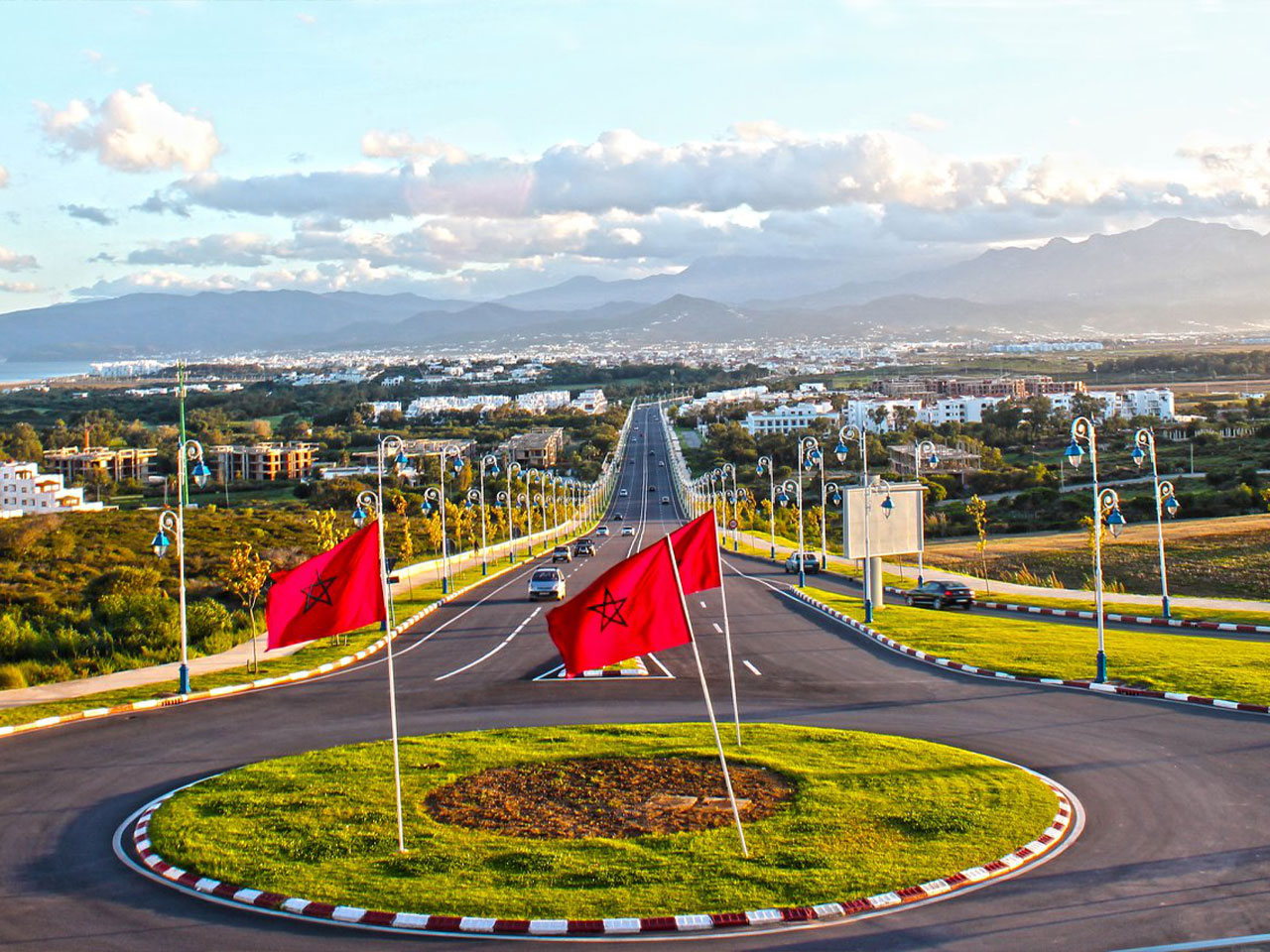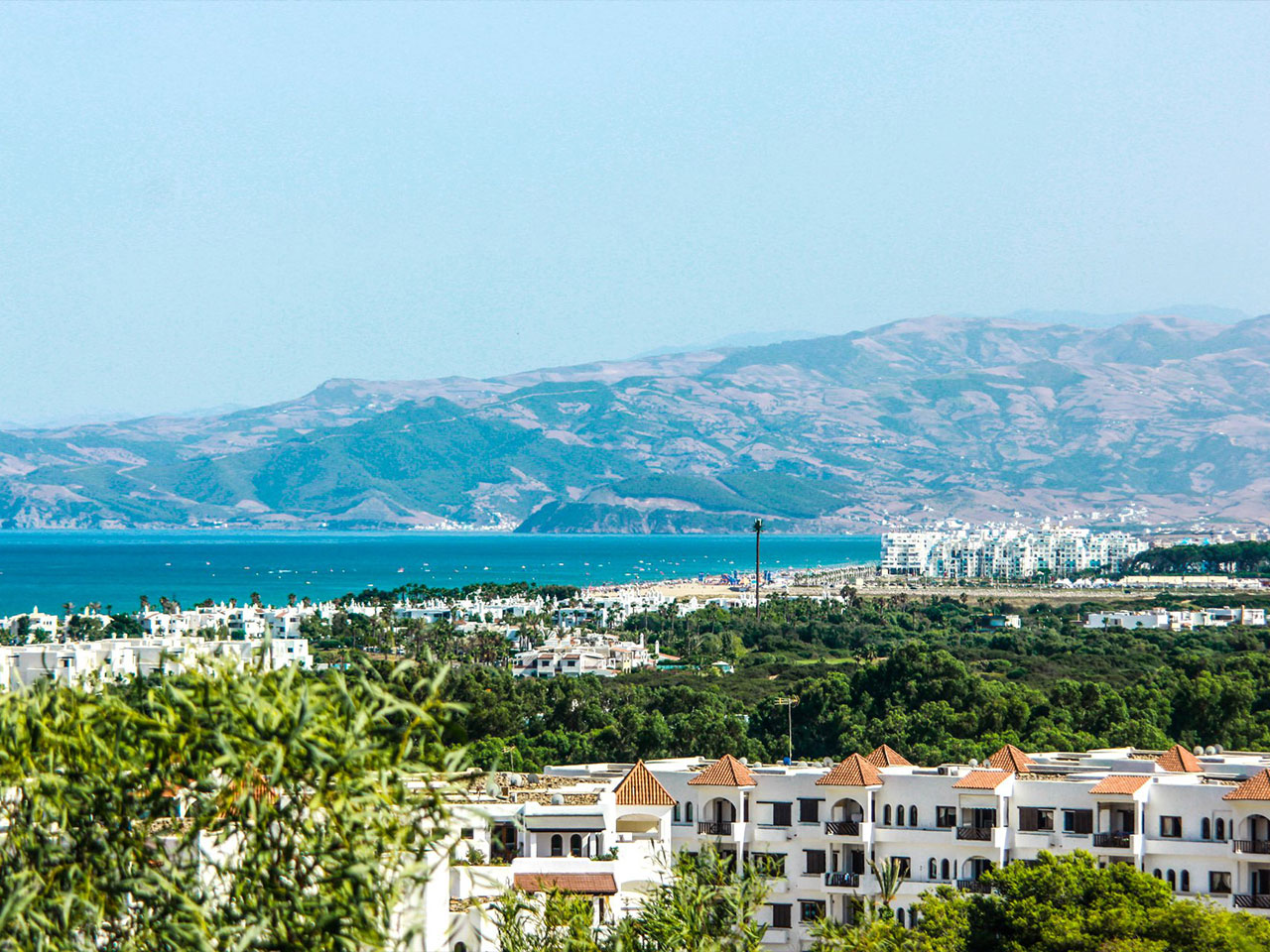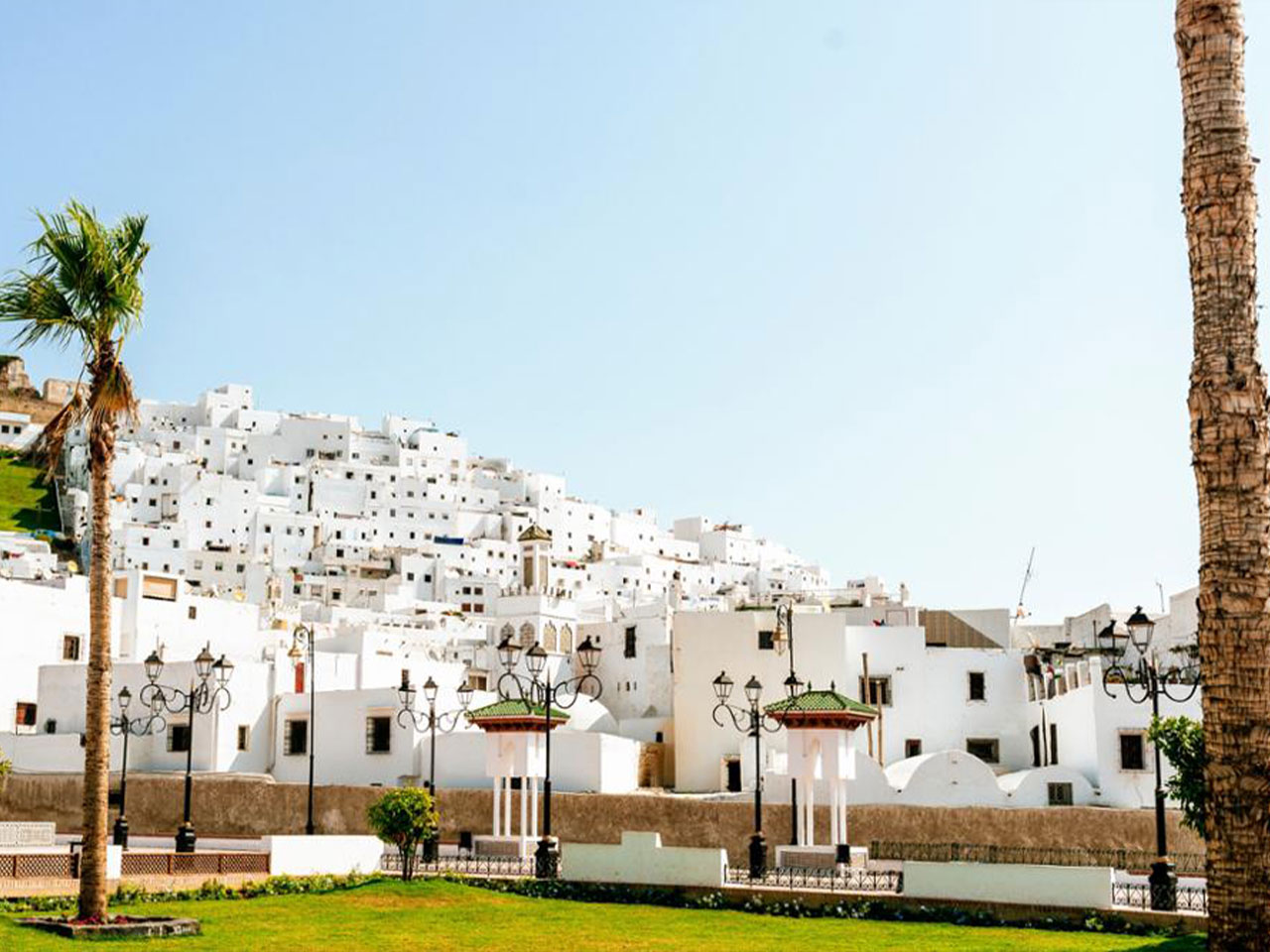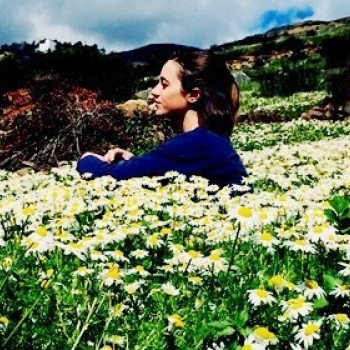Tetouan tour
Hosting you is a delight
GLOBAL MOROCCO EXPLORATION SHORT TOURS – TETOUAN
The City in History
Tetouan is located in the Rif mountainside overlooking the Mediterranean Sea. It a Spanish-Moorish town, guardian of the finest traditions of the Andalusian and Mediterranean civilization. It offers a unique setting for tourists looking for well-being and authenticity. Tetouan, nicknamed the «white dove» or «the daughter of Granada» by the Arab poets, is a rich historical place dating to the third century BC, based on the archaeological excavations in the ancient city of Tamuda.
Phoenicians and Romans were the first to settle on this land and build a city which was destroyed and rebuilt several times over the invasions. In the fifteenth century the Merenids built the walled city of Tetouan to control the rebellious tribes of the Rif.
Many Muslims and Jews settled in Tetouan escaping from The Spanish inquisition with the fall of Granada in 1492. Throughout the seventeenth and eighteenth centuries the city grows due to its status as a Mediterranean port where goods transited to and from the capital, Fez.
After the War of 1860, the Spanish managed to occupy the town and left only after payment of a compensation in 1862. The Spanish occupation restarted in 1913, Tetouan became the capital of the Spanish Protectorate in northern Morocco until the signing of the independence treaty in 1956. During this period, Tetouan flourished again economically and artistically. This period was also characterized by a political struggle between the Spanish administration and the nationalists of Tetouan, whose main figure is Abdelkhalek Torres.
- DAY 1 TETOUAN-GUIDED HISTORICAL VISIT
-
Pick up at the port of Tangier or Ceuta frontiers or any other city of your choice. Check in your boutique riad in Tetouan medina and after some refreshment, begin your historical visit. Start with the medina characterized by the architecture of its houses built in the Andalusian style inspired from Seville and Granada. With its green and white houses, its crenellated ramparts and shady squares, the Medina of Tetouan is a UNESCO World Heritage site since 1997. It has five kilometers long rampart walls. The medina is accessible through seven magnificent carved doors Oqla Bab, Bab Saaida (east), Bab Mqabare and Bab Ejjyafe (North), Bab Nouader (west), Bab Toute, Bab Remouz (south).
The seven gates of the medina are historical testimonials of the city and its succeeding waves of settlement, the arrival of the Andalusians in the fifteenth century, and then the Moorish invasion in the early seventeenth century, the transfer of the Mellah district in 1808, and the opening of the walls in the twentieth century in order to connect the new Spanish (Ensanche) district to the Medina .
The medina of Tetouan is the liveliest place in town. Here, the souks are well separated, each trade occupying a specific perimeter. Its large Mellah (Jewish quarter) was called Little Jerusalem. The Tarafin Street bordered with jewelers leads to the Hassan II square and to the Royal Palace, a fine example of Spanish-Moorish architecture.
The medina has retained its past dynamic nature, the artisans perpetuate their know-how and the houses are well preserved by the descendants’ owners. These old houses built around a patio reflect the high degree of sophistication of domestic architecture.
Its distinctiveness lies in the existing of a 15th century network of pipelines coming from the water springs of the city. In Berber language, «Titaouin» means «Springs». This is where the houses and many fountains get their water from through the Skoundou (Spanish segundo), a network of underground pipelines.
This network provides the houses and buildings, fountains, mosques, and hammams with drinking water, along a spring line coming out at the foot of Jebel Dersa. This network is similar to the one developed by the Romans in Volubilis and seems to have been adopted by the Andalusians. Even today, some houses keep these water fountains from the past.
Visit the Palace Square in the Mohammed V Avenue where you can admire Dar Tair known for its statue on the top floor. On this avenue, there is the ancient Spanish casino dating from the 20s, and Tetouan’s General Library and Archives built in the 30s. Its large documentary resources have turned it into a reading and research place dedicated to the history of Morocco. This avenue also passes through the Square Moulay El Mehdi where is located the Church of Our Lady of Victory, built in 1919. Continue to Square Al Adl, where you will find the courthouse and the cinema Avenida, a legendary place in the city. There is the Spanish theater built in the 30s.
Visit the Archaeological Museum where lies the ancient history of the city, luxury mosaic works, Roman bronze figurines, coins collections from the Punic period.
Visit Bab Okla Gate where stands the school of traditional arts and crafts «Dar Sanaa» with its neo-Arabic architecture. It stands as a showcase for the different artistic expressions which have flourished for centuries in Tetouan. The artisans are working on wood painting, embroidery, zellige, copper, leather, stucco or marquetry with the same expertise as their ancestors four centuries ago.
Continue to the Ethnological Museum of Moroccan Arts that was established in 1929. It is a masterpiece of Tetouan. At the entrance, you can enjoy a garden with a pool in the center and a wall fountain adorned with zellige a design similar to those found in the Andalusian palaces of Granada. Today, this museum present, with a permanent exhibition, traditional costumes and musical instruments, traditions, the habits and customs of the city of Tetouan and its region.
Have lunch in one of the medina finest restaurant to taste the local specialties. Tetouan culinary art is a combination of many influences (Rif, Andalusian, Jewish...), and is reputed to be one of the best in Morocco. Tetouanese dishes, including sweet and sours, chicken with caramelized raisins are pure delight. Other typical recipes: the chicken and eggs Pastilla without almonds, the Tahliya, the gazelle horns, the ktayefs, and of course the Jben, a creamy white cheese wrapped in palm leaves and prepared in women’s co-operatives.
After lunch, continue at your leisure to explore the beauty of Tetouan.The succession of twentieth century Spanish architecture and the many unique buildings give the city a modern prestigious cachet with the European colonial architecture that combines Baroque and Art Deco influences. Gardens, public areas and broad avenues have been created to enhance the rich urban heritage.
Visitors find it Andalusian, Ottoman, European. Tetouan is just all that. From this excitement is born a true art of living that still continues today through its craftsmen and artists. Land of the arts, from music to visual arts, the city is home to artistic movements, which influences go far beyond the region.
Like any other artistic capital, Tetouan had to have its School of Fine Arts, founded in 1947 by Don Mariano Bertucci, Spanish orientalist painter and great fan of Moroccan art. National Institute of Fine Arts since 1993 , this school has since 2000 a department for the teaching of comic strip art and hosts every year since 2004 the International Festival of Comic Strips.
Tetouan stands apart by its numerous festivals, the most important of which are the International Festival of Mediterranean Cinema created in 1985, the International Lute Festival, the International Festival of Comic Strips and the Women’s Voices Festival, a tribute to all those who worked tirelessly to take their city into the XXI century, while preserving its authenticity and versatile identity.
We can arrange a customize private tours around these festivals. Let us be your guide and we promise to show you the best
Visit Riad Al Ochak garden located below the old medina. It covers about five acres. It was created in 1929, a perfect model of the famous gardens of the Palace Alhambra in Granada. It has been extensively restored and now offers Its colorful flower beds, its stately trees and numerous ponds and fountains. The garden is part of the city’s heritage and most people are used to gathering there in the late afternoon seeking quiet moments of relaxation.
After the visit, you guide will advise about a restaurant for dinner.
B&B accommodation in a boutique riad in the medina
The region highlights
The zellige craftsmanship is one of the most distinctive artistic professions of the city of Tetouan. It is defined by its shaping technique, colors and surface finishes that give it a special uniqueness and authenticity.
Tetouan is also known for the mastery of its craftsmen in wood painting. The craftsmen who specialize in this type of craft usually work with mineral powder paint. Their work is very varied and very beautiful.
Leather working is a very old craft in this city, as evidence by its tanneries. Butte Tanners’ souk is also the textiles and clothes market, «Guersa El Kebira» where all types of multicolored fabrics, plain or embroidered are sold and where «Jebliates” (Rif’s women) dressed in traditional costume sell their «Mendils», red, white and blue striped pieces of cloth.
Tetouanese embroidery is certainly one of the most original in Morocco. Its success is due to its multiple origins, with both local and Ottoman and Arabic-Andalusian influences.
- DAY 2 archaeological site of Tamuda
-
Rise and have breakfast and start your day to visit archaeological site of Tamuda an ancient city near Tetouan in Martil Valley. The ancient city was founded in the 3rd century BC by the Mauritanian Berbers of northern Morocco. Tamuda was one of the major cities of the Roman province Mauretania Tingitana. It was used for fish salting and purple production, according to researcher from the University of Cadiz. Artifacts from both the Roman and the Phoenician era have been found in the site of Tamuda. In the late 13th century small fortifications existed near the Roman ruins with the name "Tittawin", that later were renamed "Tetouan"
Homer regarded the land of Jebala as a country of legend. This region is believed to be the place where were located the famous gardens of the Hesperides. It is even said that Hercules came there to «steal the golden apples. »
Drive along Tamuda Bay characterized by its hilly landscape, covered with green forests, overlooking translucent blue waters of the Mediterranean coastline.
Visit the Smir Laguna, where you can watch many species of migratory birds. Visit Mdiq is a popular beach resort, where life goes on at a leisurely pace. Seaside, pedestrian streets, wide beach walk on the seafront, everything has been renovated for the visitors’ delight. At the entrance to the city at the bottom of a road on the right, you can access to an authentic and endearing fishing port.
Have lunch and enjoy the fresh fish at the fishing port. M’Diq is renowned for its quality restaurants where you can enjoy many fish and seafood specialties for a very affordable price
Spend your day exploring the coast at your leisure. The Tetouan coast offers many activities combining rest and discovery. These beaches will spoil all those seeking peace and quiet. There you can admire the natural beauty of the Mediterranean, far from the bustle of the city.
Drive back to Tetouan, B&B accommodation
- DAY 3 TETOUAN- OUED LAOU-CHEFCHAOUEN RIF MOUTAINS
-
If Tetouan is sure to delight art and culture fans, its hinterland is also appealing with different charms: The Rif is the kingdom of wilderness, mountains, wadis, canyons, forests. Breathe, this is paradise for nature lovers.
From Tetouan to Oued Laou to chefchaouen the coastline offers scenic landscapes where the Rif slopes into the Mediterranean. The beautiful and wild nature in the back country is the green lung of the Tetouanese region.
After breakfast drive along the coast passing by Oued Laou famous for its artisanal pottery and stunning gorges. Continue to Chefchaouen, the blue city.
You cannot visit Tetouan without going to Chefchaouen. Its name means in Rif Berber language «horns» because of the mountain peaks which dominate and surround the city. Chefchaouen hosted the Muslim and Jewish refugees following the fall of Granada. With some twenty mosques and sanctuaries, the city of Chefchaouen is imbued with an atmosphere of deep serenity. The new inhabitants built their houses blue and white with small doors leading onto Andalusian style patios. The city charm also comes from its alleys where you will not hesitate to get lost but where you will always find your way back. It is nice to walk in the cobbled streets, to dream while resting in one of the varied little squares shaded by fig trees and drinking mint tea. Nearby stands the Kasbah built in the seventeenth century by Moulay Ali Ben Rachid to defend the city from invaders. The Kasbah conceals pleasant and peaceful Andalusian gardens. The Kasbah is located in Outa Hammam, the big square, the heart of the medina. Have your lunch is one of the restaurant of the square and savor the local healthy food.
The city of Chefchaouen was listed in the Intangible Cultural Heritage of Humanity by UNESCO in 2010. It is its unchanged nutritional model, «Mediterranean Diet», which earned the city this inscription (olive oil, cereals, fruits and vegetables, fresh or dried, a small proportion of fish, dairy products and meat, and many condiments and spices).
Head to the source of Ras El Ma, which comes down from the mountain offers a refreshing sight. Watch the local at the laundry area used by residents to wash their clothes. Head to the Jewish square and explore the local handicrafts before driving back to Tetouan.
B&B accommodation in a Boutique Riad













